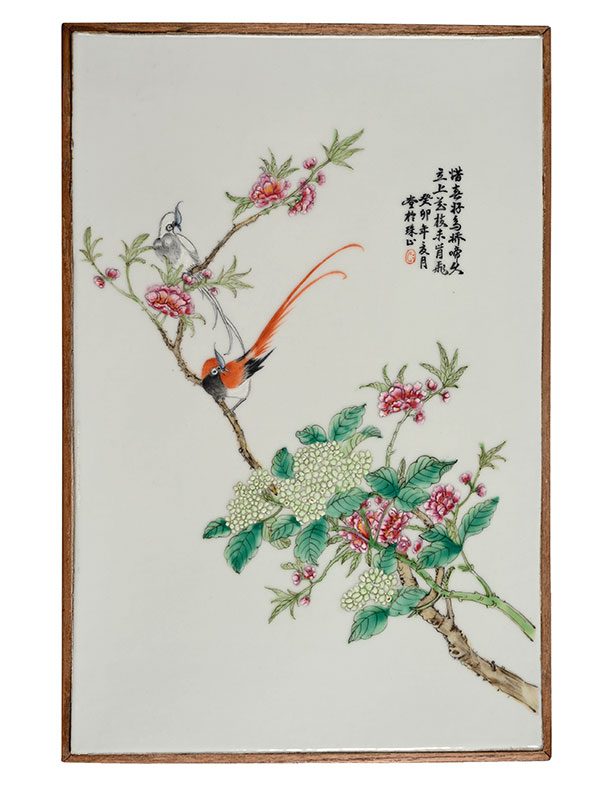Porcelain plaque with two ribbon-tailed birds
People's Republic of China, dated 1963
A porcelain plaque of rectangular format, showing two ribbon-tailed birds on intertwined branches of hydrangea-like white flowers and peonies. One bird is decorated in bright orange overglaze pigment, the other in white enamel. An inscription in Chinese characters on the right reads: xi chun hao niao jiao ti jiu, li shang hua zhi wei ken fei (beautiful bird cherishes the spring and lingers for a long time, stands on the floral branches and is unwilling to leave). It is dated: gui mao nian xia yue, Summer of Gui Mao Year (likely to be 1963) and further inscribed: hua yu zhu shan (painted at Zhushan).
Zhushan can be regarded as a nickname for Jingdezhen, Jiangxi province. Plaques and other porcelains are commonly signed “Written/Painted at Zhushan” during the 20th century. During the late Qing dynasty and the Republic of China period, many porcelain painters were gathered in Jingdezhen. They formed the famous Zhu Shan Ba Ya (eight friends of Zhu shan), a group of great porcelain painters. The ribbon-tailed bird (Shoudainiao) is also called “longevity-tailed” bird, because the ribbon (shou) is a pun for ‘longevity’ (shou).[1] To find two ribbon-tailed birds in one illustration implies ‘double longevity’, thus making this plaque a perfect present.[2]
- Tse Bartholomew, T. Hidden Meanings in Chinese Art, Asian Art Museum, San Francisco, 2006, 7.51 p. 215

